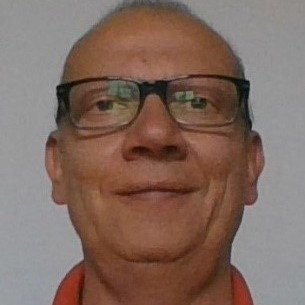Extended Reality: A New Way of Interacting with the World
A special issue of Information (ISSN 2078-2489). This special issue belongs to the section "Information and Communications Technology".
Deadline for manuscript submissions: closed (30 November 2023) | Viewed by 6549
Special Issue Editors
Interests: extended reality technologies in medicine; education and cultural heritage
Special Issues, Collections and Topics in MDPI journals
Interests: computer graphics; virtual and augmented reality; human-machine interaction
Special Issues, Collections and Topics in MDPI journals
Special Issue Information
Dear Colleagues,
Extended reality (XR) is a technological umbrella that brings together virtual reality (VR), augmented reality (AR) and mixed reality (MR) technologies.
This technology enables an extension of the real world by increasing innovative functionalities that allow the user to perceive their surrounding reality in a different and enhanced way, simulating the real world or extending it through the combination of virtual elements. Virtual content is mixed with reality and the user can interact with both the real environment and virtual objects.
Extended reality has great potential in many sectors ranging from medicine and surgery to cultural heritage, industry, tourism, retail and marketing, education and gaming, and its diffusion is demonstrated by the increasing investments promoted by companies.
To allow extended reality to become part of our daily lives, there are still some challenges to overcome.
This Special Issue solicits submissions of high-quality original research papers on any aspect and application of extended reality.
All authors of papers presented at the 1st International Conference on eXtended Reality (XR Salento 2022) are invited to submit an extended version of their works. All submitted papers will undergo the standard peer-review procedure.
Submitted manuscripts should not have been previously published, nor be under consideration for publication elsewhere. Conference papers should be cited and noted on the paper. Authors of invited papers should be aware that the final submitted manuscript must provide a minimum of 50% new content and not exceed 30% copy/paste from the proceedings paper.
Prof. Dr. Lucio Tommaso De Paolis
Prof. Dr. Andrea Sanna
Guest Editors
Manuscript Submission Information
Manuscripts should be submitted online at www.mdpi.com by registering and logging in to this website. Once you are registered, click here to go to the submission form. Manuscripts can be submitted until the deadline. All submissions that pass pre-check are peer-reviewed. Accepted papers will be published continuously in the journal (as soon as accepted) and will be listed together on the special issue website. Research articles, review articles as well as short communications are invited. For planned papers, a title and short abstract (about 100 words) can be sent to the Editorial Office for announcement on this website.
Submitted manuscripts should not have been published previously, nor be under consideration for publication elsewhere (except conference proceedings papers). All manuscripts are thoroughly refereed through a single-blind peer-review process. A guide for authors and other relevant information for submission of manuscripts is available on the Instructions for Authors page. Information is an international peer-reviewed open access monthly journal published by MDPI.
Please visit the Instructions for Authors page before submitting a manuscript. The Article Processing Charge (APC) for publication in this open access journal is 1600 CHF (Swiss Francs). Submitted papers should be well formatted and use good English. Authors may use MDPI's English editing service prior to publication or during author revisions.
Keywords
- XR in medicine and surgery
- XR in rehabilitation
- XR in education
- XR in cultural heritage and arts
- XR in industry
- XR in military
- XR in marketing
- psychological issues of integrating virtual objects in real world






